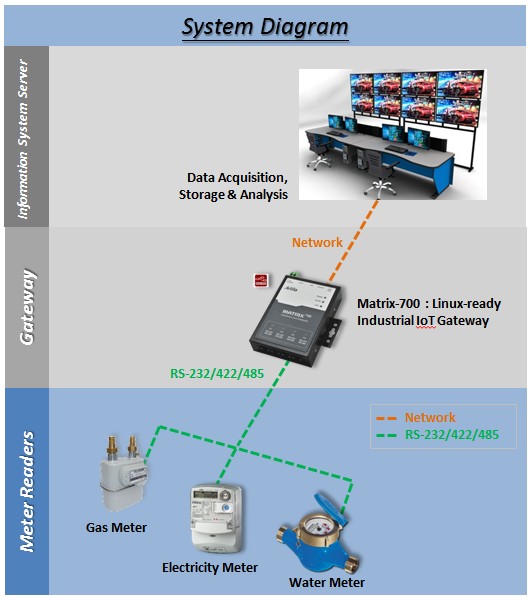
Artila’s Product & Advantage: The Matrix-700 is quite compact (78 x 108 x 24mm), but it offers a wide range of connectivity options, including one 10/100 Mbps Ethernet port, four high-speed TTY (serial) ports, two USB 2.0 ports and a micro-SD slot. System developers can take advantage of these interfaces to design the required functions such as: using Ethernet port to build a wired network, or plugging in a USB WiFi dongle to establish an IEEE-802.11 b/g wireless connection for the system. It is particularly worth mentioning that the Matrix-700 has UBI file system installed in on-board NAND Flash to offer better read and write performance. The computer also utilizes 2MB Data Flash (read only) to provide recovery mechanism in the presence of a fault. When the system or program can not function properly caused by the NAND Flash file system problems, the Matrix-700 will use on-board Data Flash to automatically start the system. Administrators can restore the computer without personally going to the scene. Features: Matrix-700
Description: An Israeli company with decades of experiences in measuring, reading, collecting, transmitting and managing data is a system developer specializing in automated meter reading solutions. The company's water meter products alone have been installed millions of units around the world, not to mention other products. In response to the trend of smart meter applications, this prestigious system developer in the international market has also begun to design the remote automatic meter reading solutions. As we all know that smart meter is a short-range communication device. Its communication range varies from tens of meters to several kilometers depending on the setting environment. As a result, the company's automated meter reading solution must be add the data concentrator between the smart meter and the monitoring center of the management unit. In order for the data concentrator to accurately and reliably collect data and achieve real-time two-way communication, the company wanted to select an embedded Linux-based computer that provides adequate computing performance and connection interfaces as a data concentrator control core. The Matrix-700 is based on the arm9 processor and Linux kernel. The system developer of this project is familiar with such development environment, so its designers can easily and quickly complete the product development. The high-speed arm processor and large memory also provide sufficient computing performance to execute the heavy tasks of the data concentrator. Supporting multiple interface ports allows designers to develop the required functions according to the actual application needs such as: connecting a switch or router with an Ethernet port, connecting a smart meter or sensor with a high-speed serial port, using USB 2.0 port to set up the wireless network, and utilizing the micro-SD slot to insert the external memory card for storage capacity expansion. The most satisfactory feature of the Matrix-700 is the fault recovery mechanism. The company hoped that the data concentrator developed by it will automatically reboot the system in the event of power failure or network disconnection. Therefore, automatically starting the computer via Data Flash exactly fits its system requirement. Diagram:
Related Products: |
 Introduction:
Introduction: 